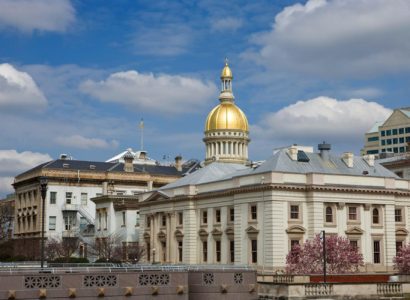With teachers and students back in classrooms, it is a good time of year to focus on what policies are being discussed Under the Dome regarding education in our state.
For countless number of years, there has been on-going debates, proposals, plans and discourse regarding the best possible way to fund our public school system. At the core, is the question as to how to distribute any state aid in a fair and equitable manner. That is then compounded with the questions regarding how much more of a burden can we put on property tax payers to provide the remaining amount of funds needed but not provided through state aid.
School funding fairness and equitability is undoubtedly one of the most controversial, on-going public policy debates in New Jersey. For almost three decades, lawmakers and New Jersey Supreme Court justices alike have wrestled with the responsibility of the State to fund school districts.
The Governor’s office cites that New Jersey spends the third highest amount per pupil in the nation on students in kindergarten through grade 12. However, there are some estimates that claim almost 80 percent of the state’s school districts are underfunded. This crisis is largely a function of the current state funding formula being significantly underfunded by the Christie Administration. In my district alone, the nine towns that make up the 14th Legislative District, the levels of school funding vary greatly in amount. Even though all of these towns are largely suburban, the level of state school aid can be light years apart.
Currently, there are two leading proposals on school funding that are similarly very far apart.
Governor Christie’s plan, which he calls the Fairness Formula, would change the funding formula to one where there is a flat amount of state aid of $6,599 per enrolled student with continuing aid for special needs students. The proposal largely focuses on decreasing funding from the 31 school districts, primarily in urban with lower income residents. The Governor’s view is that the additional funding does not produce better results in education testing or outcomes. He cites low graduation rates despite high cost per pupil. The formula does not seem to take into account, however, specific needs of some students such as free and reduced breakfast or remedial education needs in some school districts. While some districts would see a windfall in state aid, others would see their aid deeply slashed.
The leading opposing plan comes from Senate President Stephen Sweeney, the “Formula 4 Success” plan. Under his proposal, a commission would be established to develop a school funding reform plan with the focus of bringing all school districts to full funding within five years. This would represent an increase of $100 million annually. The Commission would be made up of four members tasked with developing a plan within one year of it’s creation. That plan would need to specify how to bring every school district in the state to “adequacy funding” levels within five years. Critics of this plan believe that a commission is not necessary since others have been established in the past.
With the two proposals being very far apart, there is currently no census on which is the so-called “leading” plan with the most amount of support among members of the Legislature. Realistically, with the gubernatorial election looming in 2017, it will be a long road for either plan to come to fruition.
The Legislature also is currently examining other matters affecting our school systems. For instance, legislation regarding school safety measures have been front and center. One measure that I have written would allow school districts to exclude the costs of school security from their tax levy cap. The current law limits increases in school budget expenditures to two percent with minimal exceptions such as health care and pension costs for school employees. However, the bill would provide for the additional security costs as another exemption. Just as the cost per pupil for education costs varies, so too does the cost for security per school facility.
While the State does provide security aid to school districts as part of the overall school aid, each school district may decide that they have additional needs that would incur costs. My bill would allow for those school districts to make decisions on how to best secure their facilities.
I believe that it is imperative to make sure that our children and school personnel are as safe as possible in our schools. There cannot be a limit or price put on keeping our children safe and I know that local school boards will ensure that school security is put in place in an efficient and effective manner.
Several measures also are being considered to address problems with the Higher Education Student Assistance Authority (HESAA). A few months ago, The New York Times, printed a scathing review of the agency for pressuring families to repay loans in tragedies where their child, the borrowing student, had passed away. The report uncovered tactics similar to those used by vicious loan sharks to increase the owed payments and, as some families felt, harass grieving parents.
Pending legislation ranges in the method of addressing the issue but are focused on allowing for loans to be forgiven in cases where the borrowing students passes away or faces a permanent disability which hinders them from working to pay back the loans.
The costs of educating students in our state from kindergarten through post-secondary education can be very high. But, the benefit to the potential earning power and career opportunities for our students when they have completed their education is stellar. It is imperative that we, as communities and governmental agencies, continue to make sure we support our students, education professionals, and institutions to keep New Jersey at the head of the class!
Editor’s Note: Assemblyman Wayne DeAngelo (D-Hamilton) represents the 14th Legislative District which includes parts of Mercer and Middlesex counties. He can be reached at AsmDeAngelo@njleg.org; phone (609) 631-7501; www.WayneDeAngelo.com; Facebook: Assemblyman Wayne DeAngelo; or Twitter: @DeAngeloLD14.





